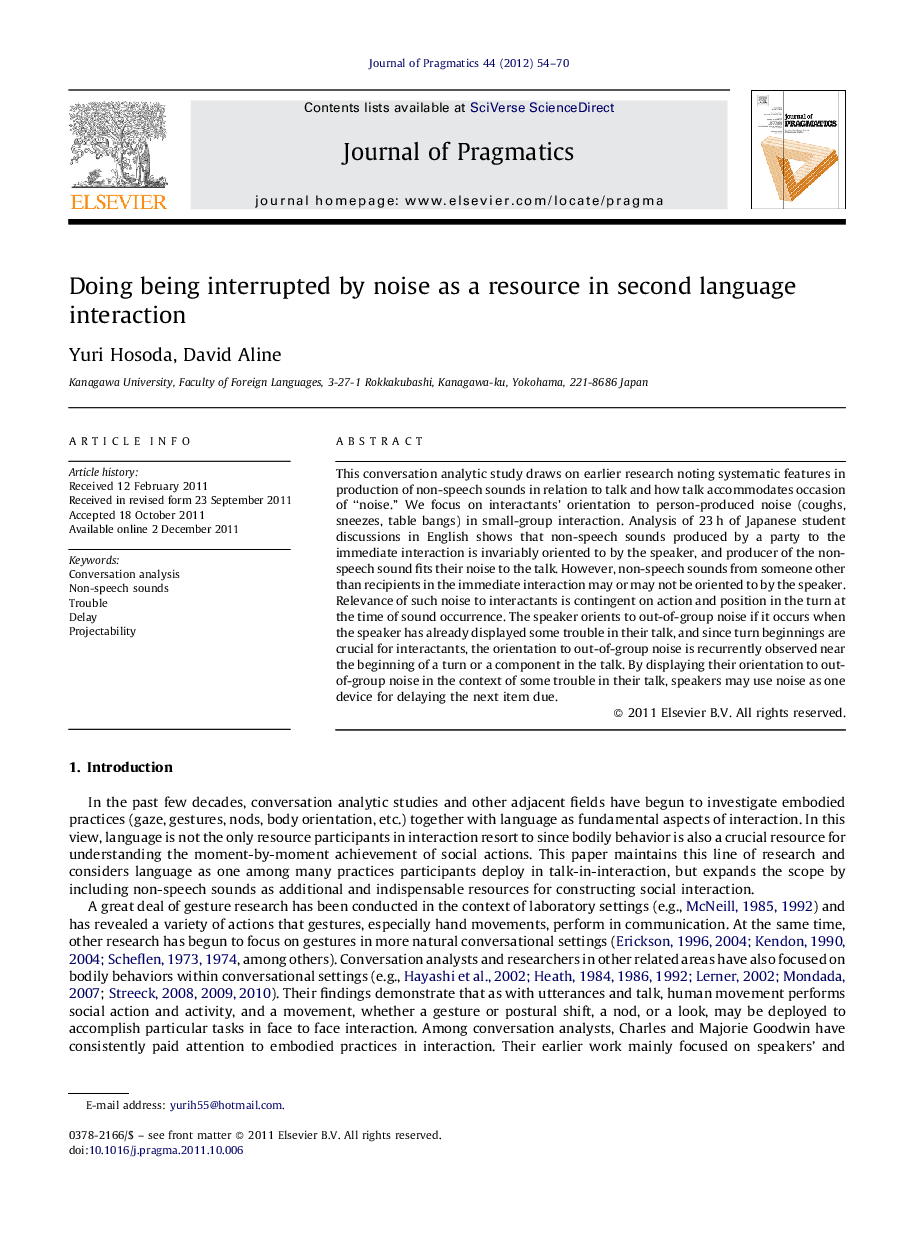| Article ID | Journal | Published Year | Pages | File Type |
|---|---|---|---|---|
| 933138 | Journal of Pragmatics | 2012 | 17 Pages |
This conversation analytic study draws on earlier research noting systematic features in production of non-speech sounds in relation to talk and how talk accommodates occasion of “noise.” We focus on interactants’ orientation to person-produced noise (coughs, sneezes, table bangs) in small-group interaction. Analysis of 23 h of Japanese student discussions in English shows that non-speech sounds produced by a party to the immediate interaction is invariably oriented to by the speaker, and producer of the non-speech sound fits their noise to the talk. However, non-speech sounds from someone other than recipients in the immediate interaction may or may not be oriented to by the speaker. Relevance of such noise to interactants is contingent on action and position in the turn at the time of sound occurrence. The speaker orients to out-of-group noise if it occurs when the speaker has already displayed some trouble in their talk, and since turn beginnings are crucial for interactants, the orientation to out-of-group noise is recurrently observed near the beginning of a turn or a component in the talk. By displaying their orientation to out-of-group noise in the context of some trouble in their talk, speakers may use noise as one device for delaying the next item due.
► This study notes systematic features of non-speech sound in relation to talk. ► We focus on orientation to person-produced noise in small-group interaction. ► Non-speech sounds produced in-group are invariably oriented to by speakers. ► Out-of-group non-speech sounds are oriented to depending on action and position in the turn. ► Speakers may use noise as one device for delaying the next item due.
